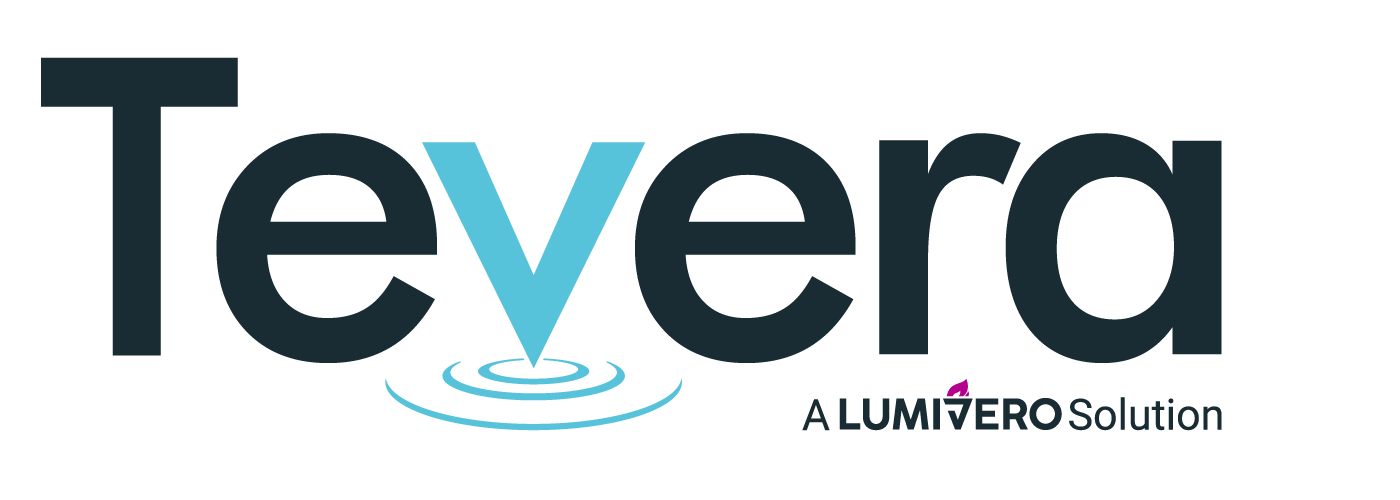Disaggregating Student Outcomes for More Meaningful Insights
Executive Summary
Uncover how disaggregating student outcomes based on cohorts, specializations, and demographic characteristics can help you nurture student growth and drive educational success. Explore the importance, benefits, and implementation strategies in this comprehensive guide.
Unpacking Disaggregation: Why are Student Outcomes Important?
The Significance of Disaggregated Data
In the realm of educational assessment, delving into specifics matters. Broad data overlooks important nuances, and this is where disaggregating student outcomes becomes invaluable. Disaggregating data offers a platform for impactful educational policies and practices.
When it comes to educational assessment, the devil truly is in the details. While holistic data can provide a macroscopic view of student success, it often fails to uncover subtle, yet vital nuances. Disaggregating student outcomes data — breaking down data into smaller, more specific subgroups — provides an opportunity to unearth these nuances, which can significantly impact educational practices and policy (Berkner & Choy, 2008).
By examining disaggregated data, educators can gain insights into the performance of specific student groups and uncover performance trends to illuminate programmatic strengths and weaknesses. This not only offers a more granular understanding of educational effectiveness but also helps identify potential gaps or disparities, offering a launchpad for targeted improvement strategies (Darling-Hammond, 2010).
3 Ways to Disaggregate Outcomes: Cohorts, Specializations, and Demographic Characteristics
Exploring Cohorts in Data Disaggregation
Cohorts and specializations are essential in the disaggregation of student outcome data. Cohorts and specializations are particularly powerful tools for disaggregating student outcome data. Cohorts, groups of students progressing through an educational program together, provide a focused lens to observe the impact of curricular changes, instructional methods, or educational interventions year-over-year (Sapon-Shevin & Chandler-Olcott, 2001).
The Role of Specializations
Examining data by academic specialization can illuminate discipline-specific trends or challenges. It allows educators to discern patterns within specialized academic communities, providing the opportunity for the development of tailored teaching methods or support resources designed to better serve students within these disciplines (Braxton, Hirschy, & McClendon, 2004).
Disaggregating Data by Demographic Characteristics
As champions of student education and advancement, we must acknowledge the impacts that bias and privilege can have on a student’s experience. By disaggregating outcomes by demographic characteristics, you can ensure that students’ outcomes are not disproportionately determined by demographic factors such as age, race, gender identity, or sexuality. And by carefully analyzing outcomes by demographic characteristics, you can strive to make your program as equitable as possible for all students.
Disaggregated Data: Benefits for All Stakeholders
Benefits for Educators and Students
Disaggregating student outcome data brings myriad benefits for all educational stakeholders. For educators, it provides data-driven insights into teaching efficacy and student comprehension, thereby helping enhance instructional strategies (Black & Wiliam, 1998).
Students benefit from the targeted resources and supports that can emerge from this type of data analysis. They receive an education that is more closely aligned with their individual needs, learning styles, and academic paths. This can lead to improved student engagement and, ultimately, better academic outcomes (Zepke, Leach, & Prebble, 2006).
Institutional Advantages
For educational institutions, data disaggregation can inform strategic planning and policy-making, ensuring resources are allocated efficiently to maximize student success. It also provides evidence-based insights for accreditation processes, demonstrating institutional commitment to continual improvement and student achievement (Ewell, 2009).
Disaggregation Implementation: A Step-By-Step Guide
Laying the Groundwork: Establishing a Robust Data Collection and Analysis System
To effectively implement data disaggregation in an educational setting, it’s crucial to establish a robust data collection and analysis system. This involves consistent and accurate data recording, coupled with the regular review of disaggregated data by both educators and administrators (Halverson, Grigg, Prichett, & Thomas, 2007).
The foundation of effective data disaggregation is a solid data collection and analysis system. Colleges and Universities should invest in high-quality student information systems that can accurately record, store, and analyze a variety of student data points. This may encompass demographic information, academic performance metrics, student feedback, and other relevant data.
- Uniform Data Collection: All departments should follow uniform data collection protocols to ensure consistency. This includes defining what data to collect, how and when to gather it, and how to record it.
- Secure Storage: Colleges should also ensure that student data is stored securely to protect student privacy.
- Regular Review: Periodically, the data should be reviewed and analyzed. Educators and administrators should both be involved in this process to ensure that different perspectives are brought to bear on the data.
Building Collaborative Environments: The Role of Communication and Teamwork
Disaggregating data is not a solitary task; it requires a team effort. Institutions should foster an environment where educators, administrators, and even students can collaborate effectively. Teams need to share insights, identify trends, and develop collective responses to the data.
Acting on the insights from disaggregated data is vital. This involves designing targeted interventions, adjusting teaching methodologies, or allocating resources in response to identified trends and gaps (Hamilton, Halverson, Jackson, Mandinach, Supovitz, & Wayman, 2009).
- Data Literacy Training: Faculty and staff should receive training on understanding and interpreting the disaggregated data. This will ensure that everyone is equipped to understand the implications of the data.
- Regular Meetings: Regular meetings should be held to discuss the findings from the data and brainstorm solutions for identified issues. These meetings should be inclusive, allowing for a wide range of viewpoints.
Turning Insights into Action: Designing Targeted Interventions
The ultimate goal of data disaggregation is to improve student outcomes. Once the data has been analyzed, colleges should use the insights to inform decision-making and policy development.
- Targeted Interventions: If the data shows that certain cohorts or specializations are struggling, colleges can develop targeted interventions. These could range from additional tutoring sessions to adjustments in teaching methodologies.
- Resource Allocation: The data can also inform how resources are allocated. For instance, if a particular specialization has higher dropout rates, resources could be diverted to provide additional support for these students.
- Continuous Improvement: Finally, colleges should remember that data disaggregation is a continuous process. The data should be consistently monitored and the interventions reviewed to ensure they’re effective. This commitment to continuous improvement is what will ultimately lead to better student outcomes.
Furthering Your Knowledge: Resources for Harnessing the Power of Your Data
Additional Reads to Deepen Your Understanding of Disaggregating Student Outcomes
- Berkner, L., & Choy, S. (2008). Descriptive Summary of 2003–04 Beginning Postsecondary Students: Three Years Later. National Center for Education Statistics.
- Black, P., & Wiliam, D. (1998). Inside the black box: Raising standards through classroom assessment. Phi Delta Kappan, 80(2), 139-148.
- Braxton, J. M., Hirschy, A. S., & McClendon, S. A. (2004). Understanding and reducing college student departure. ASHE-ERIC Higher Education Report, 30(3).
- Darling-Hammond, L. (2010). The Flat World and Education: How America’s Commitment to Equity Will Determine Our Future. Teachers College Press.
- Ewell, P. (2009). Assessment, accountability, and improvement: Revisiting the tension (NILOA Occasional Paper No.1). National Institute for Learning Outcomes Assessment.
- Halverson, R., Grigg, J., Prichett, R., & Thomas, C. (2007). The New Instructional Leadership: Creating Data-Driven Instructional Systems in School. Journal of School Leadership, 17(2), 159-194.
- Hamilton, L., Halverson, R., Jackson, S., Mandinach, E., Supovitz, J., & Wayman, J. (2009). Using Student Achievement Data to Support Instructional Decision Making (NCEE 2009-4067). National Center for Education Evaluation and Regional Assistance, Institute of Education Sciences, U.S. Department of Education.
- Sapon-Shevin, M., & Chandler-Olcott, K. (2001). Student cohorts: Communities of critique or dysfunctional families? Journal of Teacher Education, 52(5), 350-364.
- Zepke, N., Leach, L., & Prebble, T. (2006). Being learner centered: One way to improve student retention? Studies in Higher Education, 31(5), 587-600.
SOLUTIONS
RELATED POSTS
PRODUCT OVERVIEW
See how Tevera can elevate your program.
Disaggregating Student Outcomes for More Meaningful Insights
Executive Summary
Uncover how disaggregating student outcomes based on cohorts, specializations, and demographic characteristics can help you nurture student growth and drive educational success. Explore the importance, benefits, and implementation strategies in this comprehensive guide.
Unpacking Disaggregation: Why are Student Outcomes Important?
The Significance of Disaggregated Data
In the realm of educational assessment, delving into specifics matters. Broad data overlooks important nuances, and this is where disaggregating student outcomes becomes invaluable. Disaggregating data offers a platform for impactful educational policies and practices.
When it comes to educational assessment, the devil truly is in the details. While holistic data can provide a macroscopic view of student success, it often fails to uncover subtle, yet vital nuances. Disaggregating student outcomes data — breaking down data into smaller, more specific subgroups — provides an opportunity to unearth these nuances, which can significantly impact educational practices and policy (Berkner & Choy, 2008).
By examining disaggregated data, educators can gain insights into the performance of specific student groups and uncover performance trends to illuminate programmatic strengths and weaknesses. This not only offers a more granular understanding of educational effectiveness but also helps identify potential gaps or disparities, offering a launchpad for targeted improvement strategies (Darling-Hammond, 2010).
3 Ways to Disaggregate Outcomes: Cohorts, Specializations, and Demographic Characteristics
Exploring Cohorts in Data Disaggregation
Cohorts and specializations are essential in the disaggregation of student outcome data. Cohorts and specializations are particularly powerful tools for disaggregating student outcome data. Cohorts, groups of students progressing through an educational program together, provide a focused lens to observe the impact of curricular changes, instructional methods, or educational interventions year-over-year (Sapon-Shevin & Chandler-Olcott, 2001).
The Role of Specializations
Examining data by academic specialization can illuminate discipline-specific trends or challenges. It allows educators to discern patterns within specialized academic communities, providing the opportunity for the development of tailored teaching methods or support resources designed to better serve students within these disciplines (Braxton, Hirschy, & McClendon, 2004).
Disaggregating Data by Demographic Characteristics
As champions of student education and advancement, we must acknowledge the impacts that bias and privilege can have on a student’s experience. By disaggregating outcomes by demographic characteristics, you can ensure that students’ outcomes are not disproportionately determined by demographic factors such as age, race, gender identity, or sexuality. And by carefully analyzing outcomes by demographic characteristics, you can strive to make your program as equitable as possible for all students.
Disaggregated Data: Benefits for All Stakeholders
Benefits for Educators and Students
Disaggregating student outcome data brings myriad benefits for all educational stakeholders. For educators, it provides data-driven insights into teaching efficacy and student comprehension, thereby helping enhance instructional strategies (Black & Wiliam, 1998).
Students benefit from the targeted resources and supports that can emerge from this type of data analysis. They receive an education that is more closely aligned with their individual needs, learning styles, and academic paths. This can lead to improved student engagement and, ultimately, better academic outcomes (Zepke, Leach, & Prebble, 2006).
Institutional Advantages
For educational institutions, data disaggregation can inform strategic planning and policy-making, ensuring resources are allocated efficiently to maximize student success. It also provides evidence-based insights for accreditation processes, demonstrating institutional commitment to continual improvement and student achievement (Ewell, 2009).
Disaggregation Implementation: A Step-By-Step Guide
Laying the Groundwork: Establishing a Robust Data Collection and Analysis System
To effectively implement data disaggregation in an educational setting, it’s crucial to establish a robust data collection and analysis system. This involves consistent and accurate data recording, coupled with the regular review of disaggregated data by both educators and administrators (Halverson, Grigg, Prichett, & Thomas, 2007).
The foundation of effective data disaggregation is a solid data collection and analysis system. Colleges and Universities should invest in high-quality student information systems that can accurately record, store, and analyze a variety of student data points. This may encompass demographic information, academic performance metrics, student feedback, and other relevant data.
- Uniform Data Collection: All departments should follow uniform data collection protocols to ensure consistency. This includes defining what data to collect, how and when to gather it, and how to record it.
- Secure Storage: Colleges should also ensure that student data is stored securely to protect student privacy.
- Regular Review: Periodically, the data should be reviewed and analyzed. Educators and administrators should both be involved in this process to ensure that different perspectives are brought to bear on the data.
Building Collaborative Environments: The Role of Communication and Teamwork
Disaggregating data is not a solitary task; it requires a team effort. Institutions should foster an environment where educators, administrators, and even students can collaborate effectively. Teams need to share insights, identify trends, and develop collective responses to the data.
Acting on the insights from disaggregated data is vital. This involves designing targeted interventions, adjusting teaching methodologies, or allocating resources in response to identified trends and gaps (Hamilton, Halverson, Jackson, Mandinach, Supovitz, & Wayman, 2009).
- Data Literacy Training: Faculty and staff should receive training on understanding and interpreting the disaggregated data. This will ensure that everyone is equipped to understand the implications of the data.
- Regular Meetings: Regular meetings should be held to discuss the findings from the data and brainstorm solutions for identified issues. These meetings should be inclusive, allowing for a wide range of viewpoints.
Turning Insights into Action: Designing Targeted Interventions
The ultimate goal of data disaggregation is to improve student outcomes. Once the data has been analyzed, colleges should use the insights to inform decision-making and policy development.
- Targeted Interventions: If the data shows that certain cohorts or specializations are struggling, colleges can develop targeted interventions. These could range from additional tutoring sessions to adjustments in teaching methodologies.
- Resource Allocation: The data can also inform how resources are allocated. For instance, if a particular specialization has higher dropout rates, resources could be diverted to provide additional support for these students.
- Continuous Improvement: Finally, colleges should remember that data disaggregation is a continuous process. The data should be consistently monitored and the interventions reviewed to ensure they’re effective. This commitment to continuous improvement is what will ultimately lead to better student outcomes.
Furthering Your Knowledge: Resources for Harnessing the Power of Your Data
Additional Reads to Deepen Your Understanding of Disaggregating Student Outcomes
- Berkner, L., & Choy, S. (2008). Descriptive Summary of 2003–04 Beginning Postsecondary Students: Three Years Later. National Center for Education Statistics.
- Black, P., & Wiliam, D. (1998). Inside the black box: Raising standards through classroom assessment. Phi Delta Kappan, 80(2), 139-148.
- Braxton, J. M., Hirschy, A. S., & McClendon, S. A. (2004). Understanding and reducing college student departure. ASHE-ERIC Higher Education Report, 30(3).
- Darling-Hammond, L. (2010). The Flat World and Education: How America’s Commitment to Equity Will Determine Our Future. Teachers College Press.
- Ewell, P. (2009). Assessment, accountability, and improvement: Revisiting the tension (NILOA Occasional Paper No.1). National Institute for Learning Outcomes Assessment.
- Halverson, R., Grigg, J., Prichett, R., & Thomas, C. (2007). The New Instructional Leadership: Creating Data-Driven Instructional Systems in School. Journal of School Leadership, 17(2), 159-194.
- Hamilton, L., Halverson, R., Jackson, S., Mandinach, E., Supovitz, J., & Wayman, J. (2009). Using Student Achievement Data to Support Instructional Decision Making (NCEE 2009-4067). National Center for Education Evaluation and Regional Assistance, Institute of Education Sciences, U.S. Department of Education.
- Sapon-Shevin, M., & Chandler-Olcott, K. (2001). Student cohorts: Communities of critique or dysfunctional families? Journal of Teacher Education, 52(5), 350-364.
- Zepke, N., Leach, L., & Prebble, T. (2006). Being learner centered: One way to improve student retention? Studies in Higher Education, 31(5), 587-600.
Disaggregating Student Outcomes for More Meaningful Insights
Executive Summary
Uncover how disaggregating student outcomes based on cohorts, specializations, and demographic characteristics can help you nurture student growth and drive educational success. Explore the importance, benefits, and implementation strategies in this comprehensive guide.
Unpacking Disaggregation: Why are Student Outcomes Important?
The Significance of Disaggregated Data
In the realm of educational assessment, delving into specifics matters. Broad data overlooks important nuances, and this is where disaggregating student outcomes becomes invaluable. Disaggregating data offers a platform for impactful educational policies and practices.
When it comes to educational assessment, the devil truly is in the details. While holistic data can provide a macroscopic view of student success, it often fails to uncover subtle, yet vital nuances. Disaggregating student outcomes data — breaking down data into smaller, more specific subgroups — provides an opportunity to unearth these nuances, which can significantly impact educational practices and policy (Berkner & Choy, 2008).
By examining disaggregated data, educators can gain insights into the performance of specific student groups and uncover performance trends to illuminate programmatic strengths and weaknesses. This not only offers a more granular understanding of educational effectiveness but also helps identify potential gaps or disparities, offering a launchpad for targeted improvement strategies (Darling-Hammond, 2010).
3 Ways to Disaggregate Outcomes: Cohorts, Specializations, and Demographic Characteristics
Exploring Cohorts in Data Disaggregation
Cohorts and specializations are essential in the disaggregation of student outcome data. Cohorts and specializations are particularly powerful tools for disaggregating student outcome data. Cohorts, groups of students progressing through an educational program together, provide a focused lens to observe the impact of curricular changes, instructional methods, or educational interventions year-over-year (Sapon-Shevin & Chandler-Olcott, 2001).
The Role of Specializations
Examining data by academic specialization can illuminate discipline-specific trends or challenges. It allows educators to discern patterns within specialized academic communities, providing the opportunity for the development of tailored teaching methods or support resources designed to better serve students within these disciplines (Braxton, Hirschy, & McClendon, 2004).
Disaggregating Data by Demographic Characteristics
As champions of student education and advancement, we must acknowledge the impacts that bias and privilege can have on a student’s experience. By disaggregating outcomes by demographic characteristics, you can ensure that students’ outcomes are not disproportionately determined by demographic factors such as age, race, gender identity, or sexuality. And by carefully analyzing outcomes by demographic characteristics, you can strive to make your program as equitable as possible for all students.
Disaggregated Data: Benefits for All Stakeholders
Benefits for Educators and Students
Disaggregating student outcome data brings myriad benefits for all educational stakeholders. For educators, it provides data-driven insights into teaching efficacy and student comprehension, thereby helping enhance instructional strategies (Black & Wiliam, 1998).
Students benefit from the targeted resources and supports that can emerge from this type of data analysis. They receive an education that is more closely aligned with their individual needs, learning styles, and academic paths. This can lead to improved student engagement and, ultimately, better academic outcomes (Zepke, Leach, & Prebble, 2006).
Institutional Advantages
For educational institutions, data disaggregation can inform strategic planning and policy-making, ensuring resources are allocated efficiently to maximize student success. It also provides evidence-based insights for accreditation processes, demonstrating institutional commitment to continual improvement and student achievement (Ewell, 2009).
Disaggregation Implementation: A Step-By-Step Guide
Laying the Groundwork: Establishing a Robust Data Collection and Analysis System
To effectively implement data disaggregation in an educational setting, it’s crucial to establish a robust data collection and analysis system. This involves consistent and accurate data recording, coupled with the regular review of disaggregated data by both educators and administrators (Halverson, Grigg, Prichett, & Thomas, 2007).
The foundation of effective data disaggregation is a solid data collection and analysis system. Colleges and Universities should invest in high-quality student information systems that can accurately record, store, and analyze a variety of student data points. This may encompass demographic information, academic performance metrics, student feedback, and other relevant data.
- Uniform Data Collection: All departments should follow uniform data collection protocols to ensure consistency. This includes defining what data to collect, how and when to gather it, and how to record it.
- Secure Storage: Colleges should also ensure that student data is stored securely to protect student privacy.
- Regular Review: Periodically, the data should be reviewed and analyzed. Educators and administrators should both be involved in this process to ensure that different perspectives are brought to bear on the data.
Building Collaborative Environments: The Role of Communication and Teamwork
Disaggregating data is not a solitary task; it requires a team effort. Institutions should foster an environment where educators, administrators, and even students can collaborate effectively. Teams need to share insights, identify trends, and develop collective responses to the data.
Acting on the insights from disaggregated data is vital. This involves designing targeted interventions, adjusting teaching methodologies, or allocating resources in response to identified trends and gaps (Hamilton, Halverson, Jackson, Mandinach, Supovitz, & Wayman, 2009).
- Data Literacy Training: Faculty and staff should receive training on understanding and interpreting the disaggregated data. This will ensure that everyone is equipped to understand the implications of the data.
- Regular Meetings: Regular meetings should be held to discuss the findings from the data and brainstorm solutions for identified issues. These meetings should be inclusive, allowing for a wide range of viewpoints.
Turning Insights into Action: Designing Targeted Interventions
The ultimate goal of data disaggregation is to improve student outcomes. Once the data has been analyzed, colleges should use the insights to inform decision-making and policy development.
- Targeted Interventions: If the data shows that certain cohorts or specializations are struggling, colleges can develop targeted interventions. These could range from additional tutoring sessions to adjustments in teaching methodologies.
- Resource Allocation: The data can also inform how resources are allocated. For instance, if a particular specialization has higher dropout rates, resources could be diverted to provide additional support for these students.
- Continuous Improvement: Finally, colleges should remember that data disaggregation is a continuous process. The data should be consistently monitored and the interventions reviewed to ensure they’re effective. This commitment to continuous improvement is what will ultimately lead to better student outcomes.
Furthering Your Knowledge: Resources for Harnessing the Power of Your Data
Additional Reads to Deepen Your Understanding of Disaggregating Student Outcomes
- Berkner, L., & Choy, S. (2008). Descriptive Summary of 2003–04 Beginning Postsecondary Students: Three Years Later. National Center for Education Statistics.
- Black, P., & Wiliam, D. (1998). Inside the black box: Raising standards through classroom assessment. Phi Delta Kappan, 80(2), 139-148.
- Braxton, J. M., Hirschy, A. S., & McClendon, S. A. (2004). Understanding and reducing college student departure. ASHE-ERIC Higher Education Report, 30(3).
- Darling-Hammond, L. (2010). The Flat World and Education: How America’s Commitment to Equity Will Determine Our Future. Teachers College Press.
- Ewell, P. (2009). Assessment, accountability, and improvement: Revisiting the tension (NILOA Occasional Paper No.1). National Institute for Learning Outcomes Assessment.
- Halverson, R., Grigg, J., Prichett, R., & Thomas, C. (2007). The New Instructional Leadership: Creating Data-Driven Instructional Systems in School. Journal of School Leadership, 17(2), 159-194.
- Hamilton, L., Halverson, R., Jackson, S., Mandinach, E., Supovitz, J., & Wayman, J. (2009). Using Student Achievement Data to Support Instructional Decision Making (NCEE 2009-4067). National Center for Education Evaluation and Regional Assistance, Institute of Education Sciences, U.S. Department of Education.
- Sapon-Shevin, M., & Chandler-Olcott, K. (2001). Student cohorts: Communities of critique or dysfunctional families? Journal of Teacher Education, 52(5), 350-364.
- Zepke, N., Leach, L., & Prebble, T. (2006). Being learner centered: One way to improve student retention? Studies in Higher Education, 31(5), 587-600.



















